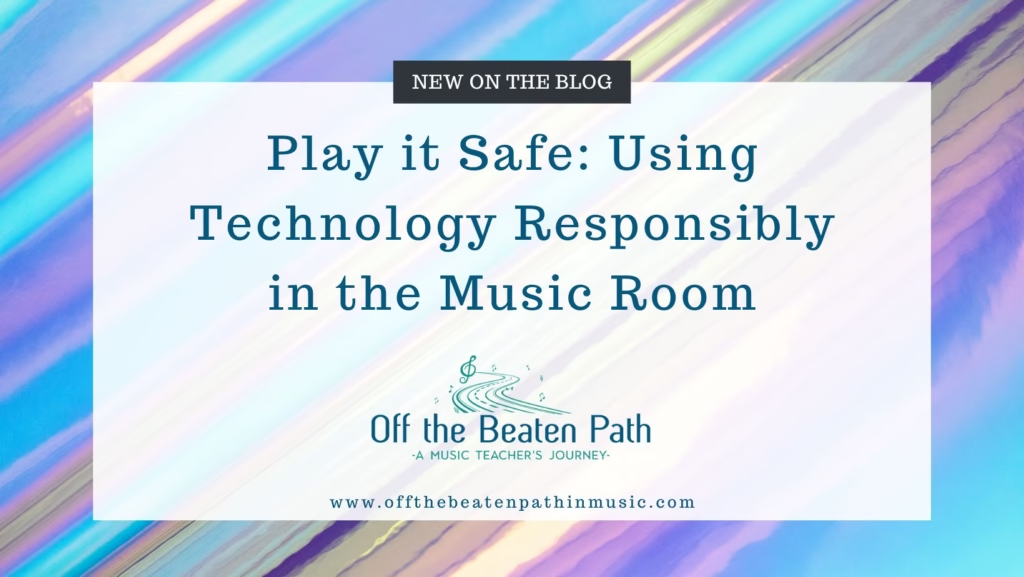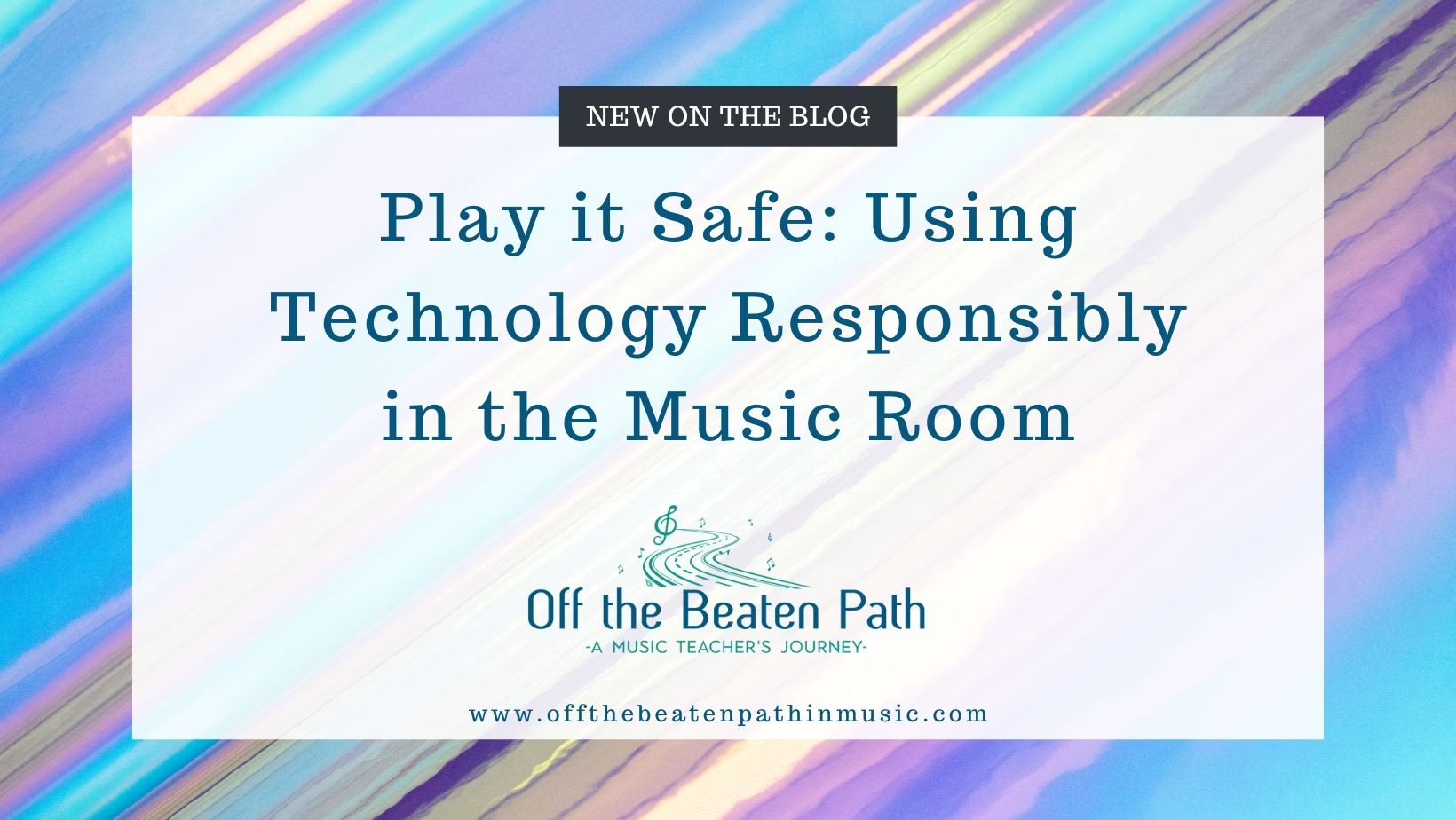Play it Safe: Using Technology Responsibly in the Music Room
This article about tech safety was originally published in The Woman Conductor Journal, October 2025 issue.
Technology has become increasingly common in music classrooms, whether through rehearsal recordings, shared videos, practice apps, and more. While tech can definitely enhance teaching and learning, music teachers also carry the responsibility of protecting student privacy and complying with various laws. Keep reading to learn about what music teachers at all levels (K-12 and college) need to know about safe and responsible tech use.

The Right to Privacy in Music Education
Students, whether minors or adults, have a right to privacy. Protecting student information safeguards not only the students but also the teachers and the schools from legal and ethical issues. In the United States, there are two laws that every music teacher should know about: COPPA and FERPA.
Understanding COPPA
COPPA, the Children’s Online Privacy Protection Act, applies specifically to students under the age of 13. It mandates that parental consent is obtained before students use apps or websites that collect personal information, which can include names, addresses (physical, email, and IP addresses), photos or videos, and even geolocations. Under COPPA, tech companies must have a privacy policy that is “clear and comprehensive,” specifically detailing what (if any) information is collected from users. Companies must also keep children’s information secure and place strict limits on how long it is retained.
Many tech tools that require users to create accounts are not considered “COPPA compliant,” not because they are misusing student information, but because the privacy policy and means of data collection do not meet the standards set forth by COPPA. A practice app might seem harmless, but if it requires a login, collects usage data, or tracks location, it could fall outside of COPPA compliance. Even something as simple as creating a class account on a music platform may require parental permission forms if students under 13 will use it.
In some cases, schools can act on behalf of parents to provide consent for educational tools, but this only applies when the tool is being used strictly for classroom purposes and the data is limited to what is necessary for instruction.
Understanding FERPA
FERPA is the Family Educational Rights and Privacy Act, and it protects the educational records of students of all ages. Under FERPA, schools must safeguard any personally identifiable information (PII) within educational records, which can include grades, performance evaluations, recordings, attendance and even class rosters. Parents can access their child’s educational records, but once the child turns 18 or attends a postsecondary school, the rights transfer from the parent to the student.
When applying FERPA to classroom technology, it’s important to think about where PII is being shared and if consent has been obtained. For example, a rehearsal recording posted in a private LMS for class review is fine, but uploading it publicly without consent could violate FERPA. Public performances like concerts or recitals are usually fine — but rehearsals or class activities may not be. If an app collects PII, such as student names, email addresses, or performance data, schools are responsible for making sure the company complies with FERPA requirements. Sharing student projects, recordings, or names on public platforms (websites, social media, YouTube, etc.) requires written consent if the student is identifiable. Even praising a student by name on a public page could fall into a gray area depending on context.
At the college level, FERPA still applies, and directors should also think about informed consent for live-streaming concerts, ownership of ensemble recordings, and maintaining professional communication boundaries when using digital tools.
International Perspectives
If you teach outside the U.S., your school will follow the privacy rules of your own country. For example, Canada has PIPEDA (Personal Information Protection and Electronic Documents Act) federally and additional provincial rules that govern how schools use student data. In some provinces, you may not even be allowed to use apps that store student data outside Canada. In Europe, the GDPR (General Data Protection Regulation) sets strict rules on how student data is collected, stored, and shared, often with higher standards than in the U.S. As always, check your local policies before adopting new tools.
Practical Tips for Music Teachers
Many schools will maintain lists of vetted tech tools that comply with both COPPA and FERPA requirements. Additionally, tech companies should have privacy policies that are both easy to find and easy to understand, which can help you determine if a tool is appropriate for use with students. When in doubt, have a conversation with your IT department before introducing a new tool, especially if it requires students to create an account.
While it can be frustrating to hear an IT director tell you “no” when asking about a new piece of technology, know that it’s likely coming from a concern for student safety and privacy. As educators, it is our responsibility to understand the terms of service and privacy policies of any technology we use with our students. It’s also wise to know this information about the technology we use personally.
Here are a couple of guidelines you can follow for safe technology use in the band room:
- Use district- or university-approved platforms.
- Limit student identifiers (don’t share names, photos, or recordings publicly without permission).
- Secure parental or student consent for recordings and account creation.
- Be cautious with recordings & performances; clarify who has access and how they’re stored.
- Model responsible use. Demonstrate to students how to use tools while respecting privacy.
Technology is a wonderful resource for music teachers, but it comes with responsibilities. Whether you are teaching elementary school general music, a university wind ensemble, or anything in between, music teachers must balance creative teaching with the responsibility of protecting student privacy and complying with applicable laws. When in doubt, check local regulations, seek administrative guidance, and always err on the side of student safety.
Action step: Take a moment this week to review the privacy policies of one tool you use every day. You might be surprised at what you find, and your students will be safer for it.





